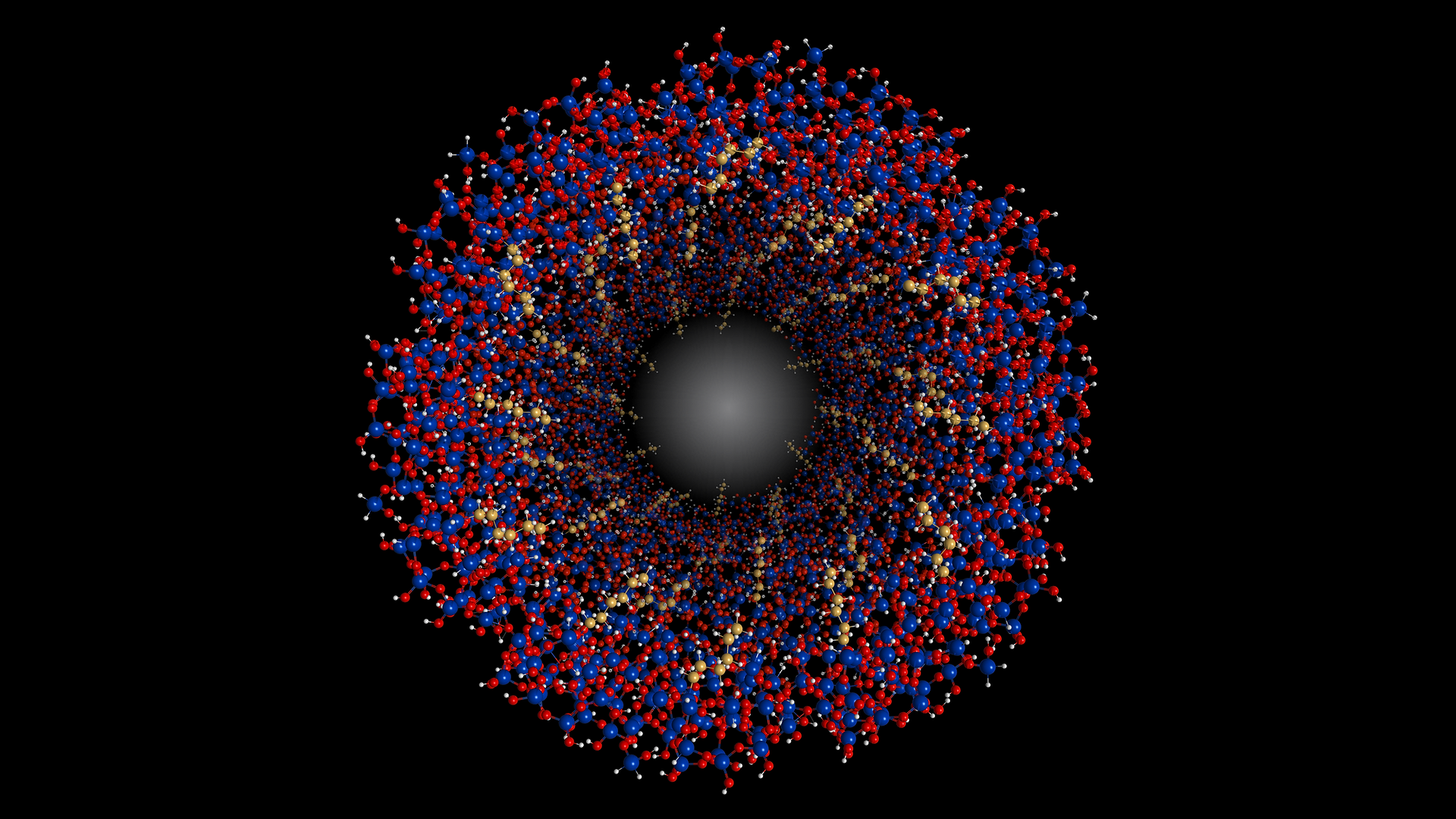


Welcome to
The Slowing Group
at Iowa State University
and the Ames Laboratory

Understanding and controlling chemical processes in confined domains
We are interested in learning how local environment and restricted mobility condition the behavior of small molecules in condensed phases.(24, 26, 31, 40, 42, 52) The fundamental questions our research tries to answer include how confinement in solution affects chemical reactivity and reaction selectivity, and if it is possible to control confinement effects to induce, enhance or inhibit processes such as cooperativity or molecular self-assembly. To this effect we take advantage of synthetic control over the properties of ordered nanoporous materials including pore dimensions, composition and functionalization developed in the synthesis area.
To study these fundamental problems we use well-known test reactions. For example we have observed that C-C couplings via carbonyl condensation catalyzed by silica-supported amines show a strong dependence on pore width (see left graph below).(31) These results suggest that confinement effects are significant even if the space in the nanopore is quite larger than the reactants (0.5 nm molecules in 3 - 5 nm wide pores). The likely reason for this behavior is that molecules do not move in solution as individual entities but carry a solvation sphere along, i.e. the solvodynamic diameters of molecules are quite larger than the individual molecules. This should make diffusion through the fluid that is densley packed inside of the pores quite difficult. Thus, analyzing the behavior of molecules in condensed phases poses a significant challenge because one must consider and investigate interactions of solutes and surfaces with the solvent in order to get a full picture of the phenomena.
Mesoporous silica materials with tailorable pore widths and lengths.

Non-Innocent supports in heterogeneous catalysis: a case for cooperativity
Another interesting observation for this reaction is that the activity of the silica supported aminopropyl catalyst is much higher than the activity of free propylamine catalyst: the heterogeneously catalyzed reaction is two orders of magnitude faster than the homogeneous reaction (see right graph above), which is a very unusual behavior. This suggests that the support is not innocent (i.e. it is not a mere spectator) for this reaction. Several control experiments demonstrated that silanol groups in the support assist the reaction by shuttling protons and activating the substrate for nucleophilic attack (Figures below).(31, 34) Full pore hybrid quantum/molecular mechanics models by the Gordon group confirmed that indeed, silanol participation lowers drastically the activation barrier for the reaction compared to the process involving only the amine catalyst.(50) Based on these results we are currently exploring other cooperative effects that involve participation of species intrinsic to non-innocent supports such as acid, base or redox active groups (see for example works on defect sites in ceria, 43, 45).
Kapil Kandel
Collaborators:
Marek Pruski (group)
Mark Gordon (group)
Jim Evans (group)


Pseudosolvent effects on interfacial catalysis: exploring local environments in nanoconfined spaces
It is well known that solvents affect the stability of molecules, intermediates, transition states and intermolecular interactions to control chemical reactivity. While such effects are well understood in homogeneous processes, little is known about their behavior in confined interfacial systems, where molecular crowding may play an important role. We have observed that immobilizing organic groups around catalytic nanoparticles leads to significant changes in the selectivity of reactions. For example the Ni-catalyzed hydrogenation of fatty acids gives mainly products of molecular fragmentation (hydrocracking) when the catalyst is loaded in nanopores; however if the pores are modified with amines the selectivity changes completely giving long chain hydrocarbons with very little fragmentation.(37) While the effect of amines in this example may be of steric or electronic nature, immobilized groups may also act by defining specific environments around the active site. In this sense, groups covalently bound to the surface can surround incoming reactant molecules in a solvent-like fashion. Thus, we can expect these surface groups to have the same type of effects on molecular guests as solvents do. For instance, several researchers have identified unusual phenomena arising from hydrophobic domains created by organic groups inside nanopores, however these effects have not been quantified and systematically investigated. Using solvatochromic probes we have been able to measure the local polarity within organofunctionalized nanopores and develop structure-property relationships that let us precisely tune the effective dielectric properties at liquid-solid interfaces.(52) We have also demonstrated that the local polarity inside functionalized nanopores is different from the bulk solvent that surrounds them. We can now use this understanding to control catalytic reactions and other solvent dependent processes such as drug delivery or biosensing.(23, 34) For example, we have shown how the selective TEMPO-catalyzed aerobic oxidation of primary alcohols can be precisely tuned by adjusting the polarity of the local environment.(52) Importantly, while the reaction requires an organic solvent to maximize yields, this approach allows performing the whole process in water, using a suspension of particles with low-polarity pores as nanoreactors. These systems aim to emulate the environmental control achieved in the active pockets of enzymes.









Dilini Singappuli-Arachchige J. Sebastián Manzano Lindy M. Sherman
Principal Investigator: Igor Slowing
Principal Investigator: Igor Slowing

